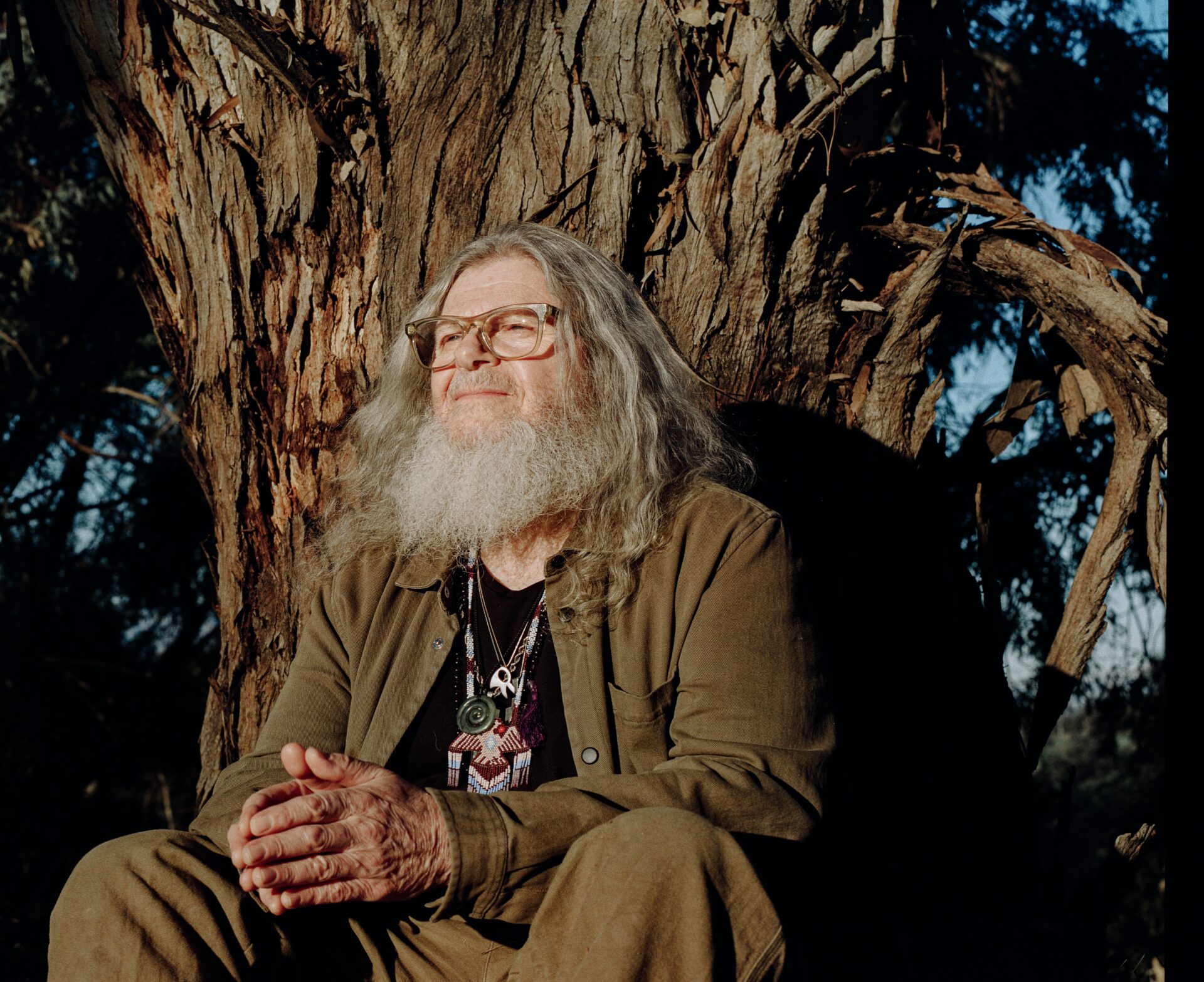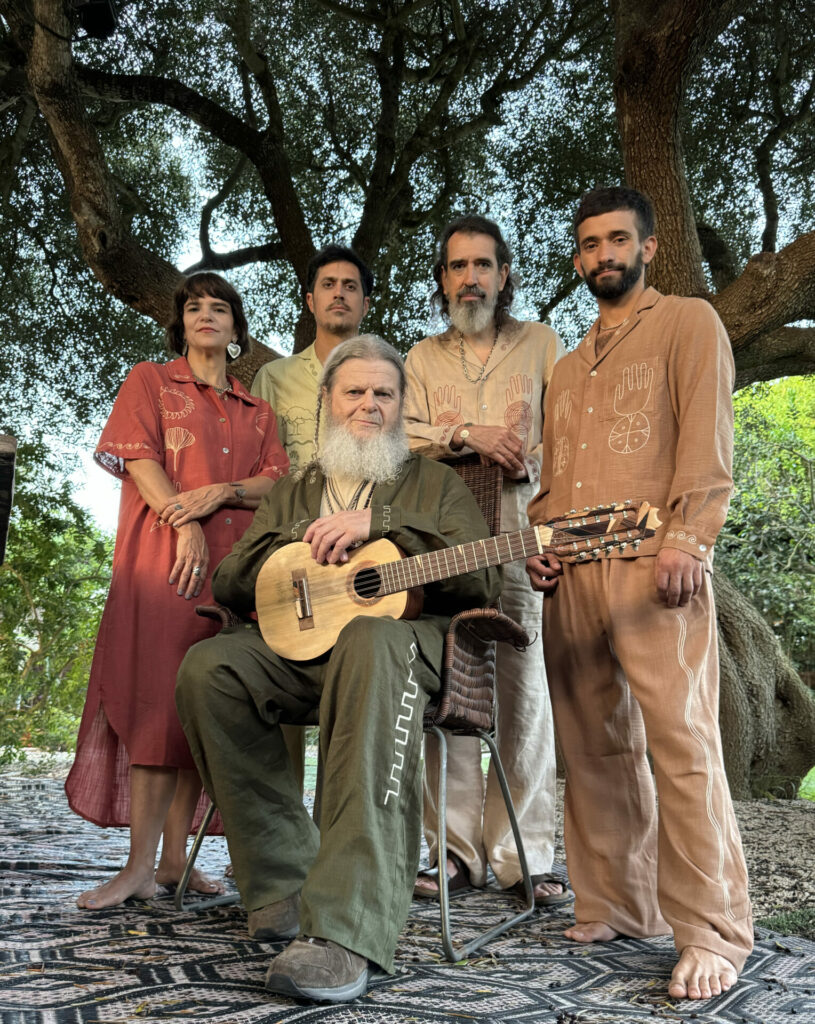Oscar-winning composer Gustavo Santaolalla: ‘The Last Of Us Has Been A Gift’
Ahead of his show at Alexandra Palace next week, Rolling Stone UK catches up with The Last of Us composer and multi-Oscar & Grammy winning artist Gustavo Santaolalla. Now making music for over 50 years, Santaolalla has worked with esteemed movie director Ang Lee, Jarvis Cocker, Trent Reznor [Nine Inch Nails], Eric Clapton and countless other artistic powerhouses across the globe.
By Lee Campbell

When Gustavo Santaolalla appears onscreen in The Last of Us season two, it’s a cameo earned through unexpected devotion. The two-time Oscar winner sits in a corner of a post-apocalyptic town near Jackson, playing banjo—a brief appearance that honours his connection with a generation of gamers who discovered his haunting compositions long before they knew his name. “A third of the audience now is probably because of The Last of Us,” he reflects from a hotel room in Antwerp. The gentle and positively glowing energy emanating from him is immediately apparent. His music stirs the soul and takes the listener on many unforgettable journeys.
This cross-generational appeal reaches its apex when Santaolalla brings his intimate and captivating show to London’s Alexandra Palace next week—a venue where he previously rehearsed for a sold-out Royal Festival Hall performance of The Last of Us music with a full orchestra in May last year. But the Ally Pally concert represents something more personal: a deep dive into the instrument, album and sound that opened cinema’s doors to him and continues to define his artistic sonics. – “I had a depth with the instrument, with the album, with that particular sound, so I put together this show with this great group of musicians”, says Santaolalla. “It’s something truly special reflecting my own personal introspective and spiritual search.”
His signature instrument, the ronroco—a larger cousin of the Andean charango—entered Santaolalla’s life through serendipity. Already an established producer in Los Angeles, he discovered the instrument during a trip home to Argentina. “When I played that instrument, I had a tremendous connection that I can’t describe,” he recalls. “Something really happened.”
That connection was both otherworldly and technical. Unlike the charango, traditionally played with rapid strumming, the ronroco’s sustain allowed Santaolalla to fingerpick, creating melodies that transcended the instrument’s Andean origins. “I started making music that sometimes could have echoes of something from the Andes mountains or Patagonian Pampas, but then I would write something that sounded like music from Eastern Europe, Africa or Asia.”
The legendary Jaime Torres, whom Santaolalla describes as “the Ravi Shankar of the charango,” became an unexpected champion. After hearing Santaolalla’s private recordings, Torres insisted: “You have captured the spirit of the instrument. People need to listen to this.” Within six months, the Ronroco album was complete, released through Nonesuch Records in 1998.

One track from that album carries particular weight. “De Ushuaia a la Quiaca” emerged from an ambitious 1980s journey through Argentina, documenting rural musicians in their own environments—shepherds and folk players far from television studios. “We were two guys going through the country, looking for our identity,” Santaolalla explains. Years later, director Walter Salles selected that very song for The Motorcycle Diaries, unaware of its origin story that so closely mirrored Che Guevara’s own formative journey.
“It was incredible that that was the piece Walter picked up,” Santaolalla marvels. The film’s score earned him his first BAFTA and launched an extraordinary film career that would include two Academy Awards for Brokeback Mountain and Babel.
The Brokeback Mountain story reveals Santaolalla’s intuitive approach to scoring. Meeting Ang Lee at a Manhattan office while rehearsing at Carnegie Hall, he played his ronroco despite knowing the instrument wouldn’t appear in the final score. Within three weeks—before a single minute was captured on film—he’d composed the entire soundtrack. “I did the whole score before one frame was shot,” he says. Screenwriter James Schamus initially thought the extended silences were placeholder suggestions. “He said, ‘at the beginning, I thought you were pulling my leg with those silences.’ “
Those “eloquent silences,” as Santaolalla calls them, became essential to the film’s emotional landscape. “I use silence as a very important part of my composition. In Brokeback, I even stretched it even more because I felt the silence that those characters had—not only outside, but their inner silence.” The approach paid off spectacularly; Schamus ended their first conversation with a prophetic declaration: “I will see you at the Oscars.”
When The Last of Us creator Neil Druckmann approached Santaolalla after his second Oscar, the composer was skeptical of video game work. He’d turned down lucrative offers that felt like “more of the same.” But Druckmann’s vision for emotional storytelling changed everything. “I never thought I was writing music for a game,” Santaolalla insists. “I always thought I was writing music for a great story.”
That story connected him with an entirely new audience—young gamers for whom his score became their first exposure to his work. “They didn’t know anything about the movies or my work as a producer. It was the first thing they knew.” The passion of that fanbase led to his video game cameo in The Last of Us Part II, where players can find him playing banjo and even unlock him as an avatar. When the HBO series launched, fans demanded his presence translate to television—hence the season two appearance.
The Ronroco tour reflects this expanded audience. “We’re filling theaters now”, he notes. The show combines material from the original Ronroco album, its follow-up Camino, and The Last of Us compositions—all centered around that distinctive acoustic sound. “I’ve never done a concert around one kind of style or one sound or one mood. It was a challenge.”
The ensemble includes baritone guitars, auto-harp, steel guitar, and an octave guitar strung with special strings made only by an Argentine company called Magma. Santaolalla mentions that the instrumentation creates an immersive sonic environment unlike anything in his eclectic career.
From his teenage years recording on two-track machines in Argentina, inspired by Les Paul’s pioneering techniques, to collaborating with Eric Clapton (who used him for the score to the documentary Life in 12 Bars and invited him to Crossroads Festival), writing with Jarvis Cocker for the Netflix animation The House, Santaolalla’s career defies categorization. His seventeen Latin Grammys, Oscars, BAFTAs, and Golden Globe represent recognition across an impossibly broad spectrum.
Yet he describes The Last of Us as “a gift”—a project that introduced his work to audiences who might never encounter the likes of Amores Perros or 21 Grams. It also connected him with Nine Inch Nails’ Trent Reznor, with whom he collaborated on the climate documentary Before the Flood. “There was mutual admiration,” he says, expressing hope for future partnerships.
When asked about the melancholy that permeates his compositions, Santaolalla offers a nuanced perspective. “It’s not a sad or happy thing.” He references “Iguazu”, a piece from Babel that exists in emotional ambiguity—”not happy, not sad, but something that somehow connects with that existential dilemma we have for being here.”
As the Ronroco tour approaches its London date at Alexandra Palace, Santaolalla seems energized by the show’s evolution. Like wine aging in a bottle—he and his wife run a small winery—the performance has matured over the past year. “In the moments we’re living in the world right now, I feel this concert has a place.”
For an artist who spent decades searching for identity through music, mixing rock with folkloric traditions while the Argentine intelligentsia questioned whether it was “real” rock and roll, Santaolalla has created something beyond genre. His ronroco—that instrument discovered by chance in a Buenos Aires music shop—has become an evocative vehicle for places & journeys, for universal emotion, speaking across generations with a sound uniquely his own. As Santaolalla puts it, “I need to not only sing in my language, but I need to play in my language.”
Gustavo Santaolalla plays London’s Alexandra Palace Theatre on Wednesday 12th November. For further information, check out @gustavosantaolalla on Instagram and https://www.alexandrapalace.com/whats-on/gustavo-santaolalla/
